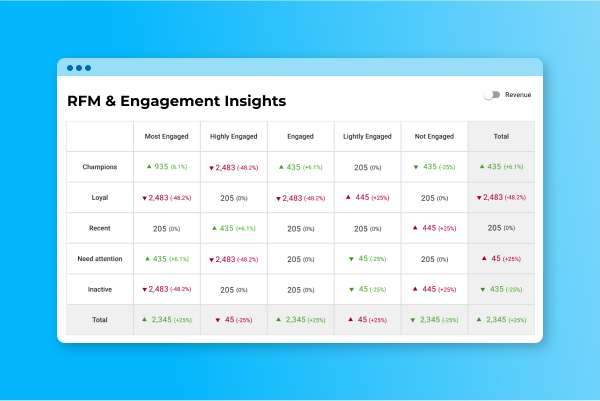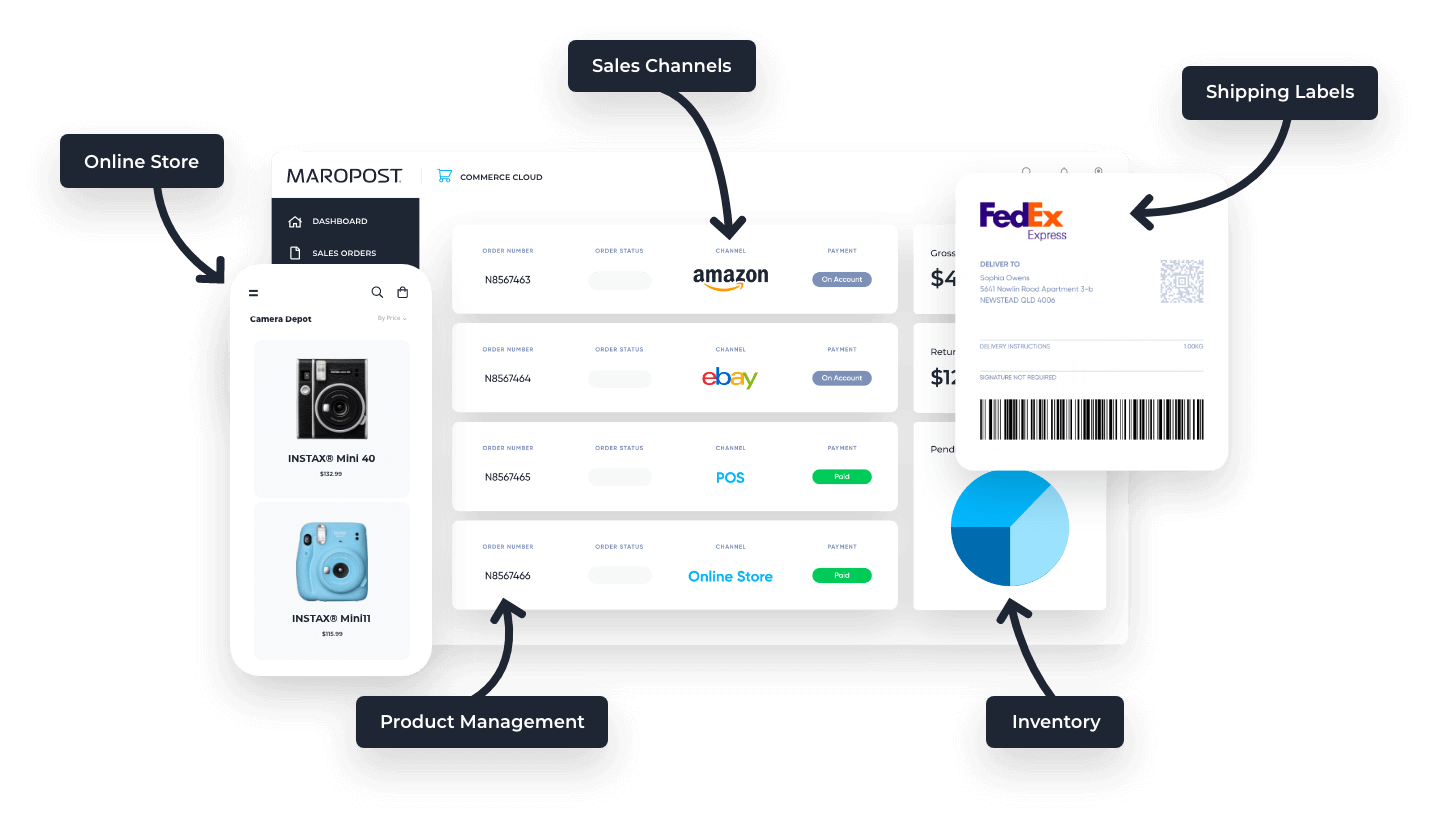Staying ahead of the curve in ecommerce marketing is not just an advantage—it’s a necessity.
The world of ecommerce is becoming more and more crowded. A brand’s ability to deeply understand their customers is the difference between one that thrives and one that fails.
Behavioral insights are a game changer for this process of differentiation. They’re transforming how brands should approach customer segmentation and engagement in their ecommerce marketing strategies.
The power of behavioral insights in ecommerce marketing
Traditional customer segmentation methods aren’t effective at capturing the nuanced behaviors that drive customers’ purchasing decisions in a multichannel world. A useful, modern ecommerce marketing automation strategy goes beyond basic purchase history. It includes every interaction a customer has with your brand across multiple touchpoints. This gives brands a holistic view of their customers’ purchase journeys.
Taking advantage of behavioral insights will give you a huge revenue boost. You may think you know who your customers are, but it’s more complex than you think. You have to understand how and why customers interact with your brand the way they do. Until then, you can’t create an ecommerce marketing strategy that truly maximizes each customer’s potential value.
Behavioral insights are a game changer. They’re transforming how brands should approach customer segmentation and engagement in their ecommerce marketing strategies.
Using eRFM analysis to drive behavior-driven segmentation in ecommerce email marketing
Understanding nuance in behaviors is essential to a modern, holistic segmentation strategy. Luckily, there is a set of metrics that gives you a full picture of your customer base, their behaviors, and their purchasing patterns.
The following metrics are the essential components of eRFM (Enhanced Recency, Frequency, Monetary) analysis:
- Recency: The last time a customer made a purchase.
- Frequency: How many purchases a customer makes within a given time frame.
- Monetary value: How much money a customer spends within a period.
- Enhanced metrics: Other behavioral data points (like social media engagement, web interactions, and email engagement). These insights help build a more holistic view of how and why customers purchase the way they do.
The analysis takes into account a variety of buying scenarios and uses that information to group customers into cohorts. This gives marketers a more accurate, granular foundation for segmenting out customers for targeted campaigns.

How to use behavioral insights in your ecommerce marketing strategy
By understanding what insights are important to a complex behavioral analysis strategy like eRFM, you can easily adapt your ecommerce marketing and merchandising decisions. Here are some ways to do this:
Identify and nurture high-value customers
The customers who spend the most money the most often are worth the effort it takes to nurture them and increase their lifetime value. To do this, you have to tailor your retention and upselling strategies to them—which means you have to understand their behavior.
Customers who spend a lot of money consistently and often might respond well to a new loyalty program. These customers would have high frequency and monetary value scores in an eRFM report. They’ve shown that they’re loyal to your brand even when not incentivized—so rewarding them will likely keep them coming back.
You could create a personalized email campaign to offer individual discounts, give early access, or invite them to VIP shopping events. Best case, you’ll turn already-loyal customers into repeat purchasers—and brand advocates.
Re-engaging at-risk customers
Before customers churn, there are usually early warning signs. Do you know what they are? And if you do, could you easily spot them if they were happening in your customer base?
Access to deep behavioral insights is a surefire way to spot these signs. This means you can intervene way ahead of time with targeted ecommerce email marketing campaigns.
For example, if a customer who used to be a frequent buyer suddenly drops off the map, they may have gone to a competitor. You would be able to identify these customers by a low recency score in an eRFM report. This would be a great time to initiate a winback campaign. You could trigger a personalized email sequence with an individual offer based on their past purchase history.
Re-engaging an at-risk customer is all about rebuilding trust. Addressing their specific interests based on reliable behavioral data is much more likely to prompt them to purchase again.
Personalizing marketing efforts at scale
Personalizing your ecommerce marketing communications can increase your conversions. But, you have to do more than attach a customer’s name in the email body. To do email personalization right, you have to use detailed customer data to make your ecommerce marketing resonate. Even still, it takes more than building out a handful of tailored campaigns and blasting them out to each cohort.
You also have to tailor messages individually within segments. For example, you may have several customers who purchase often in small amounts. These are the customers that have high frequency and low monetary value scores in an eRFM report. Your strategy might be to try to upsell or cross-sell based on products they have bought frequently.
On the flip side, some customers have likely made a single large purchase or a handful of sporadic ones. You can identify these customers in an eRFM report because they have low frequency and high monetary value scores. You might encourage these customers to come back more often by adapting your messages to highlight the breadth of your product range.
When you dive deep into behavioral insights with tools like eRFM reporting, you can segment audiences more precisely. When you have more granular segments, it’s much easier to communicate with them in a way that resonates. The result: better conversion rates and higher revenue.
Predicting and influencing future behavior
The brands with winning ecommerce marketing strategies are always two steps ahead. Sounds hard, but it’s super easy when you have access to data that lets you analyze patterns in customer behavior. This means you can predict customers’ actions and influence their journey in a way that is valuable for them and your revenue.
This has implications for both merchandising and marketing decision-making. The behavior patterns of customers with high recency, frequency, and monetary scores shows you what’s popular. This data allows you to anticipate trends and optimize your inventory and marketing focus. It also puts you way ahead of the competition.
The AI revolution in ecommerce marketing automation
Marketing for ecommerce brands is already complex. And these days, you can’t even talk about data without addressing the prevalence and opportunity that AI creates. AI is taking customer insights and purchasing predictions to a whole new level. Now, even the smallest ecommerce brands can hyper-personalize their efforts at scale.
The ability to create customer cohorts based on tons of interactional data through eRFM analysis is relatively new. Now, imagine a world where this segmentation is truly dynamic. and customer cohorts are redefined instantaneously based on the most recent behavioral data. Thanks to AI, that’s where behavioral segmentation is headed.
AI is taking customer insights and purchasing predictions to a whole new level, allowing even the smallest ecommerce brands to hyper-personalize their efforts at scale.
A customer’s recency, frequency, and monetary value scores in an eRFM analysis would be fluid, ever-evolving data points. They would change with each interaction like the flip of a switch. We’re also moving toward a world where AI can proactively adjust marketing strategies accordingly. This would eliminate all guesswork and ensure that your ecommerce marketing strategies always based on the most recent behavioral data.
AI is also increasingly allowing ecommerce marketers to break down silos between marketing channels. A holistic view of customer behavior across touchpoints, whether that’s an in-store purchase or a like on Instagram, will allow brands to make the most intelligent marketing and merchandising decisions possible.
Even though adopting AI may seem daunting, it presents a ton of opportunities for all ecommerce businesses, from small online shops to large, multinational brands. AI is the future of ecommerce segmentation, and staying ahead is essential.
Embracing the future of customer segmentation
A one-size-fits-all approach to marketing doesn’t work anymore. Brands need a nuanced, data-driven approach to engaging their customers if they want to stay competitive.
And whether you’ve fully bought into the complexities and potential of AI or not, there is still a lot of opportunity to implement an ecommerce marketing strategy driven by behavioral insights. Intelligent behavioral data strategies like eRFM reporting are becoming essential for ecommerce brands. The depth of customer insights they provide can transform retention efforts, boost average order value, and drive sustainable revenue growth.
Need to chat about your mobile marketing strategy?
More than 10,000 marketers use Maropost to engage with their prospects and customers through emails, SMS, social media and more. We’re here to help you grow your business!
Chat Now

